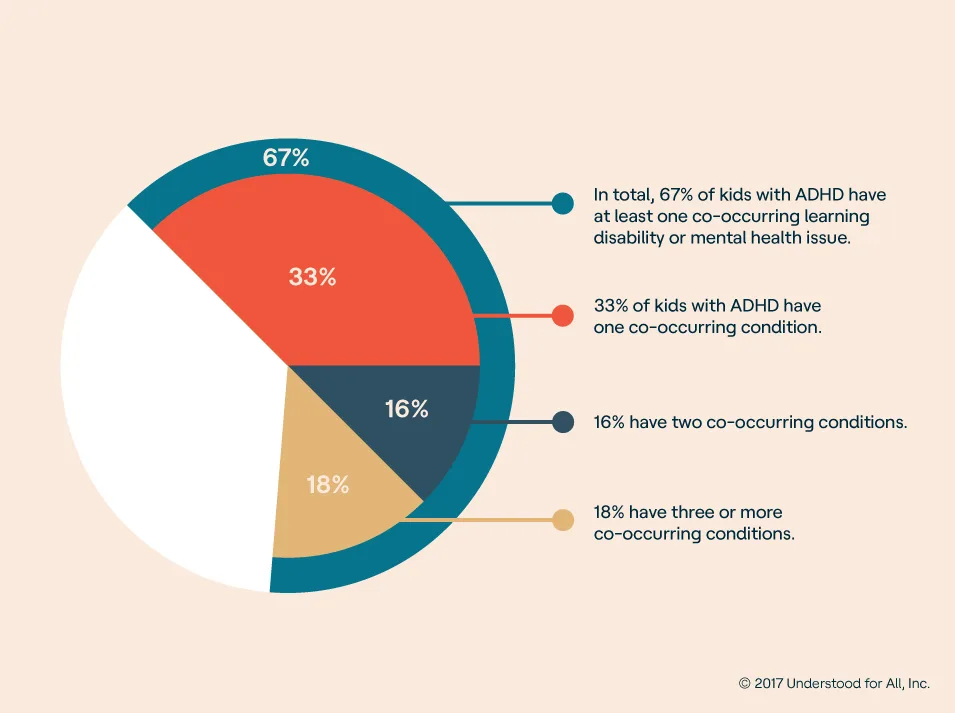ADHD and co-occurring conditions by the numbers
It’s common for kids with ADHD to also have other conditions. (You may hear this called comorbidity.) Research shows that and mental health issues impact kids with ADHD at higher rates than kids who don’t have ADHD.
We worked with Understood expert Thomas Brown to break down the numbers.

Learning disabilities that co-occur with ADHD
Studies show that as many as 45 percent of kids with ADHD also have a learning disability. Only about 5 percent of kids without ADHD have one.
According to a large study of kids with ADHD and learning disabilities:
65 percent struggled with written expression.
32 percent struggled with reading.
30 percent struggled with math.
What’s the connection? ADHD is a problem with executive functions, like organization, attention, and planning. This may create other challenges. For example, kids with ADHD can struggle with working memory, which they need for reading.
Mental health issues that co-occur with ADHD
Kids with ADHD are up to 5 times more likely to have depression compared to kids who don’t have ADHD. A prominent study found that 14 percent of kids with ADHD also have depression. Other studies make even higher estimates.
Kids with ADHD are up to 3 times more likely to have an anxiety disorder than kids who don’t have ADHD. A prominent study found that 18 percent of kids with ADHD also have anxiety disorder. Other studies make even higher estimates.
Studies also show that 15 to 50 percent of kids with ADHD have oppositional defiant disorder (ODD).
What’s the connection? We don’t know a lot about the link between ADHD and mental health issues. However, ADHD can cause trouble with emotions, which could impact mental health.
It’s common for ADHD and other conditions to co-occur
Professionals who evaluate for ADHD also check for other conditions and vice versa. If you think your child may have a learning disability or mental health issue, reach out to your child’s health care provider. You can also request a free school evaluation at any time.
* The numbers and the research in this article are from Outside the Box: Rethinking ADD/ADHD in Children and Adults, A Practical Guide, by Thomas E. Brown, PhD.
Key takeaways
Find out why ADHD and dyslexia co-occur so often.
Get advice on how to keep an eye out for learning differences if your child has ADHD.
Learn more about the connection between ADHD and depression and ADHD and anxiety.